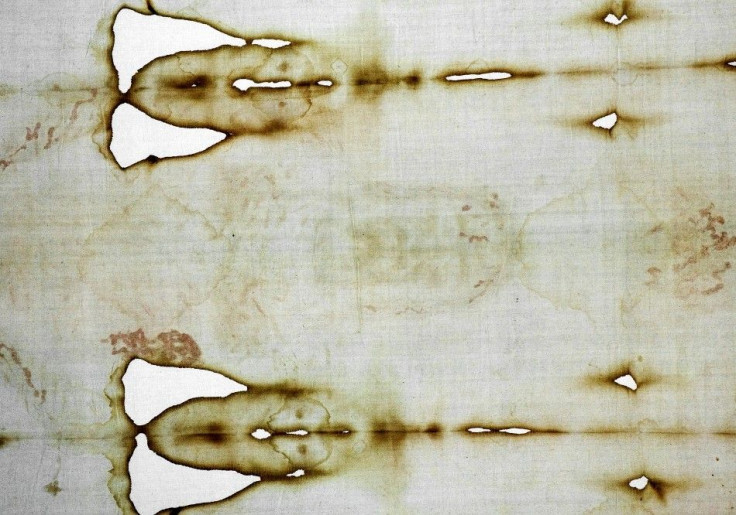Shroud of Turin Isn't Fake, Says Italian Researchers

The Shroud of Turin -- a cloth that allegedly has an imprint of Jesus Christ's face -- could not possibly be faked with the technology available during that time period, according to a team of Italian scientists.
Researchers at the National Agency for New Technologies, Energy and Sustainable Economic Development said on Wednesday that they believe it was created by an ultraviolet flash of light, but that technology wasn't available during that time period.
The Shroud of Turin has long been called a forgery by critics, but the latest findings seem to suggest that the shroud that was allegedly wrapped around Jesus' body for 40 hours could be legitimate.
The double image (front and back) of a scourged and crucified man, barely visible on the linen cloth of the Shroud of Turin, has many physical and chemical characteristics that are so particular that the staining ... is impossible to obtain in a laboratory, according to the Italian researchers.
The researchers were unwilling to go as far as to suggest that the famous image was created by a miracle, but instead were only concerned with verifiable scientific processes.
No research team has ever been able to completely replicate the Shroud of Turin, including this most recent research group, but the evidence seemingly points to the shroud being authentic and not produced with paints in the Middle Ages, as some have previously hypothesized.
Lead research professor Manuela Marinelli estimates the cloth as 95 percent authentic, which is certainly appreciated by the Vatican and other Shroud of Turin supporters.
The Vatican declares the study on the Shroud of Turin over and states that it can be dated back to the 1st century A.D., therefore, it was not made in the Middle Ages, Ekaterina Sinitsyna-Santoni, a Vatican art expert, told the Voice of Russia. The experiment also found no pigment in the image which means that it's not man- made. We found organic fragments on the Shroud, namely blood. The image itself was created by light not by laser.
This recent study seemingly contradicts a 1988 University of Oxford study that dated the cloth between 1260 and 1390.
The new information doesn't conclude that the Shroud of Turin is definitively an imprint by Jesus -- it actually does nothing of that sort -- but supporters of the shroud will take this as a good thing, while detractors while simply disregard the newest study.
© Copyright IBTimes 2025. All rights reserved.





















